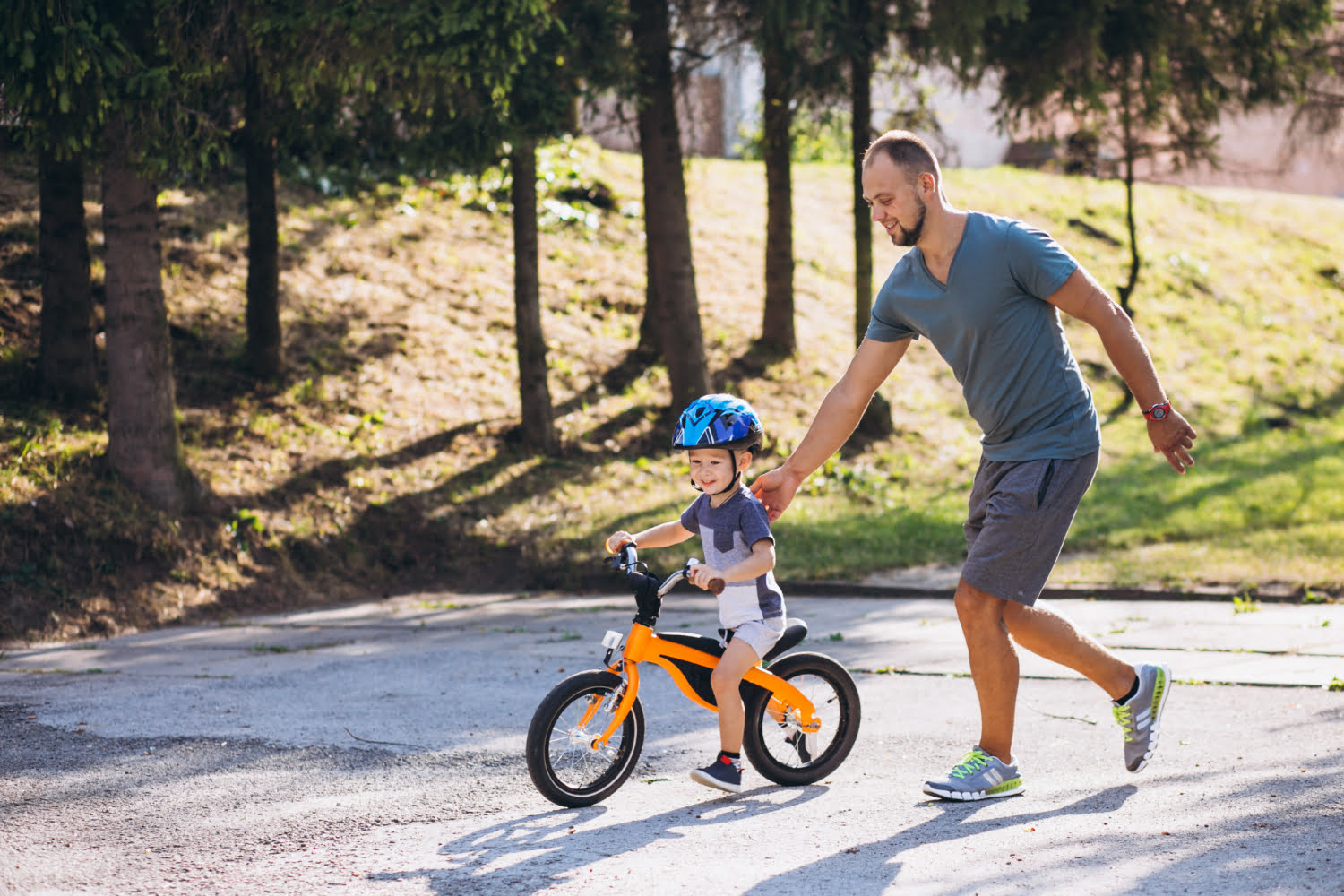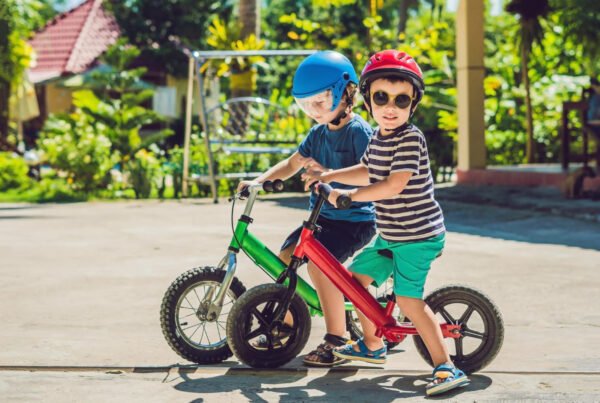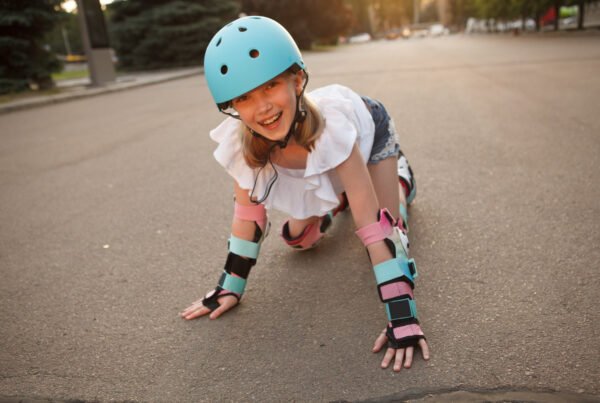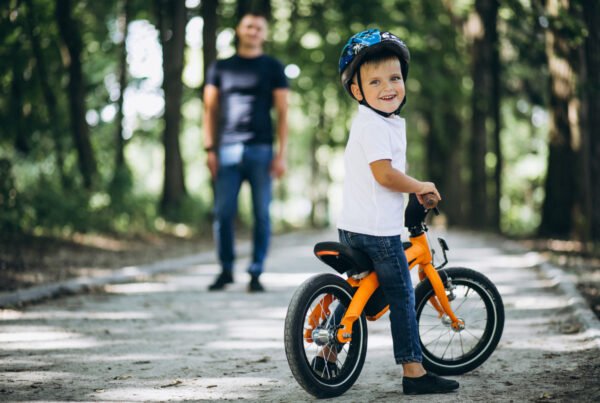Learning to ride a bike is one of the key experiences in every child’s life. In recent years, balance bikes have gained popularity as an excellent tool to introduce the youngest to the world of cycling adventure. They are a great way to develop motor skills, balance, and coordination in children, preparing them for riding a traditional pedal bike. In this article, we will look at what a balance bike is, what it consists of, what riding it looks like, and how to effectively teach a child to use this vehicle.
What is a Balance Bike and How is it Built?
A balance bike, also known as a run bike, is a special type of bicycle designed for the youngest children that does not have pedals. The child propels the bike by pushing their feet against the ground, which helps them develop balance and coordination. Balance bikes are lightweight and usually have an adjustable seat height to accommodate the child’s growth. The basic components include:
- Frame: Typically made of lightweight materials like aluminum or wood, making it easier for the child to maneuver.
- Wheels: Can be made of rubber, foam, or plastic, providing appropriate traction and cushioning.
- Seat: Adjustable to fit the child’s height, ensuring comfort during rides.
- Handlebars: Allow the child to steer and maintain balance.
What is Riding a Balance Bike Like?
Riding a balance bike, also known as a pedal-free bike, differs from traditional cycling. However, it is an extremely effective way to learn balance and coordination for young children. When a child first sits on a balance bike, they typically start by standing over the bike and gently moving it with their feet. This is a natural stage where the child gets familiar with the new vehicle and begins to understand how it works. The main characteristic of a balance bike is the absence of pedals. The child propels themselves by pushing off the ground with their feet, which allows them to control speed and direction. Initially, this might be slow, somewhat clumsy, and uncertain, but over time the child gains confidence and starts moving faster. As the child becomes more confident, they begin experimenting with lifting their feet off the ground, maintaining balance on two wheels. This is a crucial moment that prepares them for riding a traditional bike. The child instinctively learns to shift their body weight to maintain balance. When the child masters the basics of pushing and balancing, they start experimenting with steering the handlebars. Steering on a balance bike requires gentle movements and coordination, which over time becomes more natural. The child learns how to avoid obstacles and change direction. Stopping on a balance bike is simple – the child just puts their feet on the ground. This is a safe and intuitive way to control speed and avoid collisions. The child quickly learns that they can slow down or stop at any time, increasing their sense of safety. The most important element of riding a balance bike is fun. Children love the sense of freedom and speed that this vehicle provides. Balance bikes often become a favorite form of outdoor activity, and regular riding helps develop physical fitness and motor skills.
Stages of Learning to Ride
Here are the basic steps for learning to ride a balance bike: Choosing the Right Bike
- Ensure the bike is the right size. The child should be able to touch the ground with their feet while sitting on the seat.
- The bike should be lightweight for easy maneuvering.
Safety
- Always have the child wear a helmet. Consider knee and elbow pads as well.
Adaptation
- Allow the child to get comfortable with the bike by standing over it and gently pushing.
- Start on a flat, safe surface like a backyard or park.
Balancing
- Encourage the child to lift their feet off the ground for a few seconds to practice balance. Praise each successful attempt.
Pushing
- As the child gains confidence, encourage them to push off with both feet. Emphasize the importance of maintaining balance.
Changing Direction
- Once the basics are mastered, teach the child to steer and avoid obstacles. Begin with gentle turns.
Speed Control
- Teach the child to control their speed. Show them how to stop safely by gently placing their feet on the ground.
Tips for Parents on Teaching a Child to Ride a Balance Bike
Teaching a child to ride a balance bike can be a pleasant and rewarding experience for both the child and the parent. Here are some tips for effectively teaching a child to ride a balance bike: Start Early
- You can start as early as 18 months when the child can balance and walk independently.
Find the Right Place
- Choose a flat, safe, and car-free area where the child can practice.
Adjust the Seat Height
- Ensure the child can touch the ground comfortably with their feet for confidence during the first attempts.
Demonstrate
- Show how to push off with their feet while holding the handlebars. Use toys or stuffed animals to demonstrate the correct riding posture.
Encourage and Praise
- Encourage the child and praise them for each progress. Positive reinforcement motivates further attempts.
Allow Independence
- Give the child time and space to explore riding independently. Avoid too much assistance, as independent attempts are crucial for learning balance.
Learning to ride a balance bike is the first step towards independent cycling. The child learns balance, coordination, and confidence, which will be useful in the future. Remember to prepare appropriately, be patient, and practice regularly to quickly see progress in your child.

I am passionate about both traditional and electric bicycles. I specialize in advising, testing, and reviewing the latest models to help you make the best choice. My goal is to promote an active and safe lifestyle for both children and adults. I invite you to read my articles and explore the world of bicycles with me!





